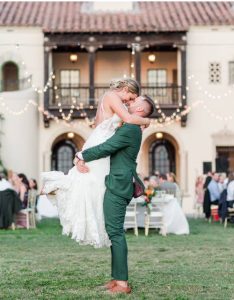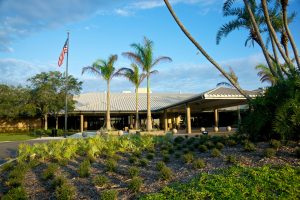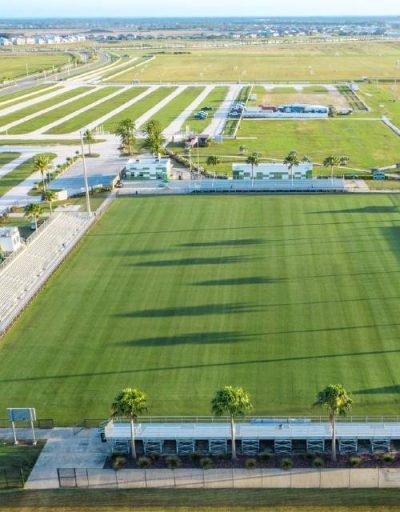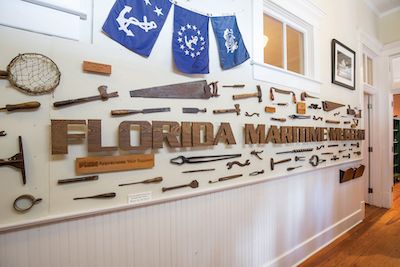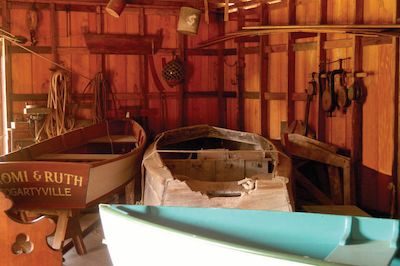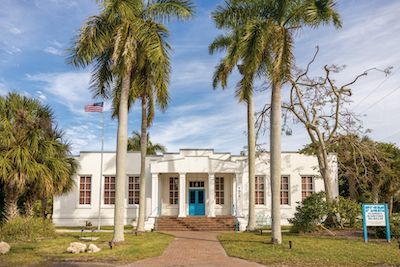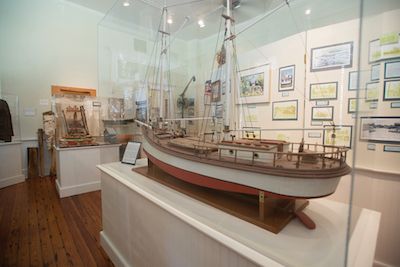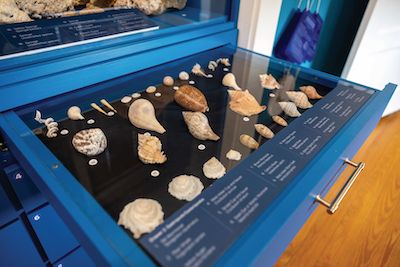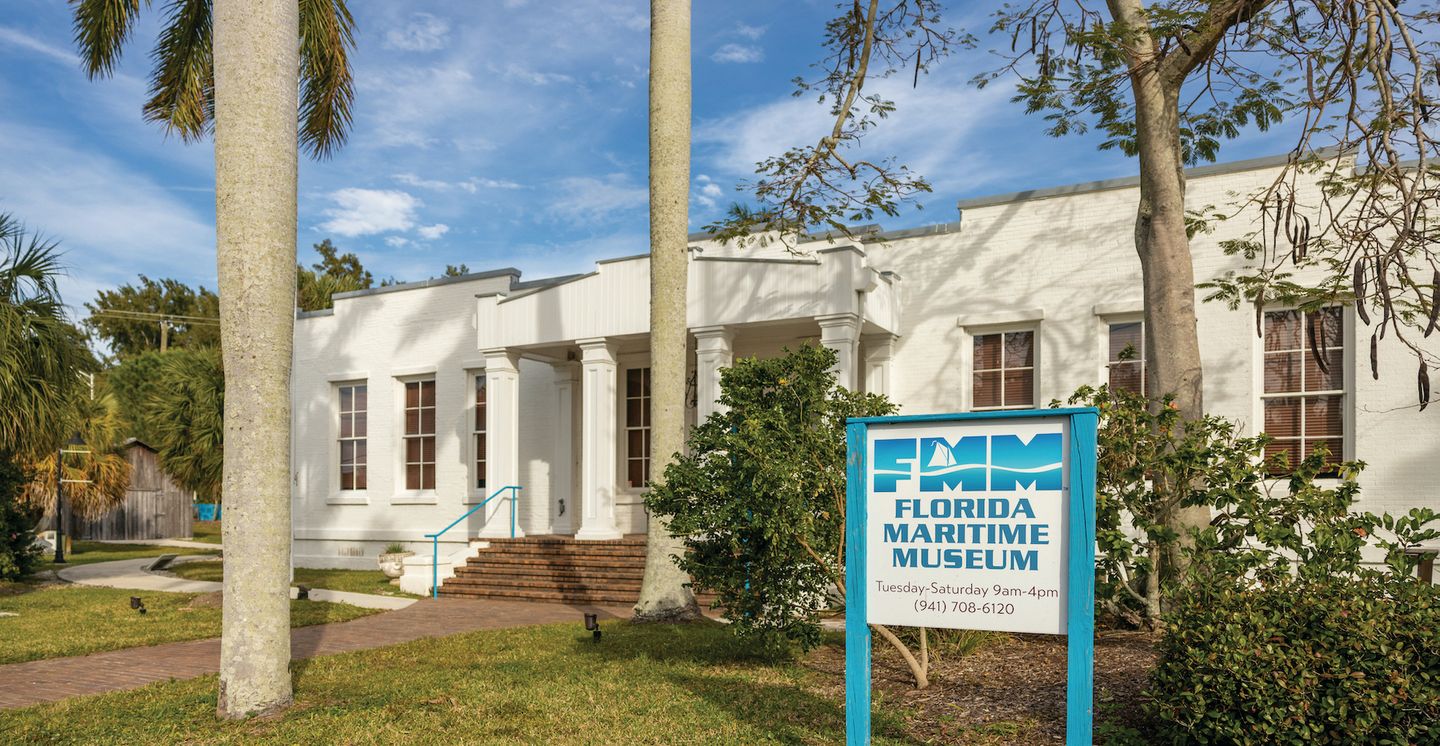
Behind the Scenes at the Florida Maritime Museum
The Florida Maritime Museum is so much more than a museum in the most traditional sense. It’s a schoolhouse, a nature preserve and a maritime library. It’s a place where first-hand accounts from the past are carefully stored and freely shared. But most of all, it’s a safe harbor of the area’s maritime history and a way of life that’s fast disappearing from Florida coastal areas—yet still very much alive here in Cortez Fishing Village on the edge of Sarasota Bay.
Serving the public since 2007, the museum’s mission is to collect, preserve and share traditional knowledge, cultural artifacts and personal stories specific to Florida’s fishing and maritime heritage. Located in the historic fishing village of Cortez, the museum’s permanent exhibits highlight local fishing history from native cultures to early settlers and modern commercial fisheries.
“A lot of people want to see authentic Florida, see it the way it used to be,” says Tori Chasey, the museum’s supervisor. “Honestly, not too much has changed as far as the way some of the commercial fishermen down here are making their livelihood.”
The history behind the history
The FMM has made its home in the old Cortez Rural Graded School, a sturdy brick structure built in 1912 that replaced the old one-room schoolhouse, which is still standing nearby as a private home. Since then, the building has played many important roles in the lives of the Cortezians.
In 1921, it served as a hurricane shelter, protecting many of the town’s residents from the worst storm to ever afflict Cortez. Then, in 1974, it attracted not an exhibition, but an artist. Robert “Bob” Sailors, a master weaver whose work appeared at the Metropolitan Museum of Art, the Smithsonian Institution, the Museum of the Chicago Art Institute, among other illustrious institutions, bought the building and transformed it into his home and studio.
“I’ve heard some funny stories about some of the crazy parties he had in the 70s in here,” Tori recalls.
A grassroots movement
Sailors owned the building until his death in 1995. By this time, the community had recognized its unique character and started thinking of how to preserve and protect its unique characters for posterity. As Tori puts it, “You know, you have a historic building like this, you want to do great things with it.”
So, the following year, the local government purchased the property, raised funds to restore the building and reopened it in 2006 as a museum and community center. “It’s definitely through all these small little groups of people who really cared about their own history and their own local culture,” says Tori. “If we hadn’t had that kind of grassroots movement, we wouldn’t be here in the building probably would have been torn down already.”
Plan your visit
When you arrive at the museum, the first thing you notice is the beautiful setting of the property. Nestled within this historic fishing village, the museum sits on almost four acres of land known as the Cortez Nature Preserve.
The single-floor building is squat, white-washed and surrounded by towering palms. It seems to gleam in the ever-present sunlight. Two tropical blue doors welcome you inside. It’s one of nearly 100 buildings in the little village now listed on the National Register of Historic Places.
“One of the things we’ve tried to do here is to make sure that we have something for everybody,” Tori explains, adding, “Something that’s hands-on, in addition to just things that you can read on the wall.”
Likewise, there are multiple ways to experience the exhibits. A visit can last just a couple of hours (“If you want to stay out of the heat,” says Tori) or can last a full day if you plan to stick around for lunch and then walk it off by doing a guided walking tour in the historic district. On average, Tori estimates, “A half-day would be plenty.”
Exhibits inside and out
There are lots of ways to experience the museum. One popular way is by completing a type of selfie scavenger hunt. Essentially, you’re given a list of items around the museum. Once you locate one, you stop and take a selfie, which you’re encouraged to share online after your visit.
Families with kids were the inspiration behind this idea. Says Tori, “We are trying to hit those people who, are coming in with kids and who have, you know, 10 minutes where they can be patient and you can read some of the panels, but then they need to get our hands on something [fun].”
Like painting a watercolor of something you see around the ground, perhaps. Visitors are encouraged to stop by the front desk and pick up their watercolor kit, which is free of charge. Back indoors, recent renovations have made the exhibits more interactive, engaging and accessible to everyone. Many of the displays have by reoriented to a more child-friendly height.
Permanent exhibits
The permanent exhibits on display feature maritime navigation, boat building, and tools used in boat construction, as well as the history of the FMM building and its former famous tenant. Each display comes to life with real people and true stories of the past. For example, in the Captain’s Corner, you’ll learn about Captain Blake Banks, a successful Cortez fisherman with a passion for sea life. This collection is actually his own private collection, which he collected from the depths of the Gulf of Mexico and painstakingly documented as a labor of love.
“He was more than just somebody trying to make money off the water,” Tori explains. “He really loved it.” There are also harrowing first-hand accounts of hurricanes, economic depressions and more from the real people who lived through each event. One of the littlest and most surprising narrators is a little boy who lived through and documented, the worst storm ever to hit Cortez in 1921.
It’s a tale that’s especially popular among kids. “Every kid likes to think about what that would have been like being a pioneer and just kind of trying to rough it,” Tori says. “Something of testing ourselves against nature, I think is the natural thing that kids want to do.”
What will you discover?
A visit to the FMM is a journey into history—not just inside the walls of the main building or even around the grounds—but in the fishing village itself, where past traditions continue on in the present.
Unlike the glimmering beaches of Anna Maria Island or the sustainable shops of Pine Avenue, Cortez is a whole different vibe. It’s a compact community of weathered homes, seasoned fish houses (complete with nets, crab traps and floats strewn about), and lots of boats everywhere you look. Old boats. New boats. Big boats. Small boats.
It’s also home to some of the best seafood restaurants anywhere in Florida—including Star Fish Company, Cortez Kitchen, Swordfish Grill and Seafood Shack—where you can eat on the dock and watch the fishing boats come in and out with the catch of the day.
Whether you’re looking for a taste of the past or a taste of today’s freshest catch, you’ll get your fill of both in Cortez.
Details: Self-guided tour reservations are available at 9 a.m. and 1:30 p.m., Tuesday through Saturday. Florida Maritime Museum, 4415 119th St. W., Cortez. Admission is free.

